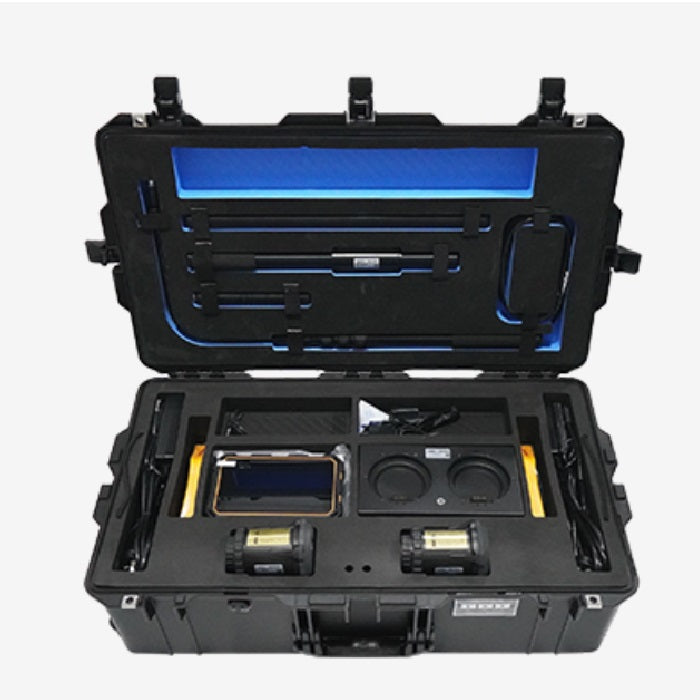DN-VI Multi-mode Composite Life Detection System integrate radar life detection, audio/ video and vibration life detection technology into one system to achieve a comprehensive survivor and trapped people search and rescue.
Low frequency ultra wide band radar technology to detect and obtain the two-dimensional coordinates of the stilled or moving alive body which are buried under mines or debris by detection of the weak vital signal of heartbeat and respiration.
Micro vibration sensor could help to collect the audio and vibration signal generated by the groaning, shouting, knocking, scratching or crawling of people to determine the approximate location of the trapped people on the ground or under the ruins.
Audio and video technology sensors can penetrate through small gap and reach to the scene under ruins to real time feed back the first hand video and audio information of the trapped people, rescue people also could talk directly to the trapped people.
Rescue people could conduct mutual verification between the result of these three detection technology and Use specific fusion strategies to optimize the search and rescue plan.
Key Advantage
High penetration: Low-frequency ultra wide band radar technology provide excellent penetration ability of complex media like collapse building and debris
Multi dimensional positioning: accurately positioning by two-dimensional coordinates of the target, and also supporting three-dimensional accurate positioning
High sensitivity: ability to detect weak heartbeat and respiration signal generated by full stilled alive; Audio and vibration signal generated by personnel moaning, shouting, knocking, scoring or crawling.
Multi-mode cross verification: Radar detection is supplemented by vibration positioning and confirmed by image and voice. The three detection modes are mutually checked and confirmed to ensure the reliability of the detection results.
Easy operation: simple and user friendly interface provide easy operation
High anti-interference: Multi environmental condition processing mode could be selected cording to different environments.
Material could be penetrated: Low moisture and non-metallic material including concrete, bricks ,soil, rock, wood etc.
High integration: The audio and video probe, microseismic probe and radar host are integrated into one carrying case for easy transportation and quick deployment.
Specification
|
Detection technology |
Radar, vibration, video and audio composite detection |
|
Antenna |
Enhanced dielectric coupled ultra wide band antenna |
|
Material to be penetrated |
Low moisture and non-metallic material including concrete, bricks ,soil, rock, wood etc.
|
|
Through wall detection ability |
Stilled target ≥25m,Moving target ≥35m |
|
Detection mode |
Real time two-dimensional positioning; three-dimensional positioning; radar, vibration, video and audio composite detection, and simultaneous detection of moving and static targets |
|
Multi target detection ability |
≥3 |
|
Media compensation mode |
Open air, through wall, debris |
|
Vibration / audio detection object |
Audio and vibration signal generated by moaning, shouting, knocking, scoring or crawling of people on the ground or under debris |
|
Vibration / audio detection range |
10m × 10m square area |
|
Vibration / audio sensor |
2 or 4 |
|
Rotation of the audio/video probe |
360 degree rotation, 180 degree flip |
|
Light of the audio and video probe |
8 build in LED, white / IR optional, visible in dark environment |
|
Communication of the audio/video probe |
Two way voice communication system for communication between rescue people and trapped people |
|
Telescopic pole of the audio/video probe |
With Flexible probe rod, bending and direction changing in any angle |







